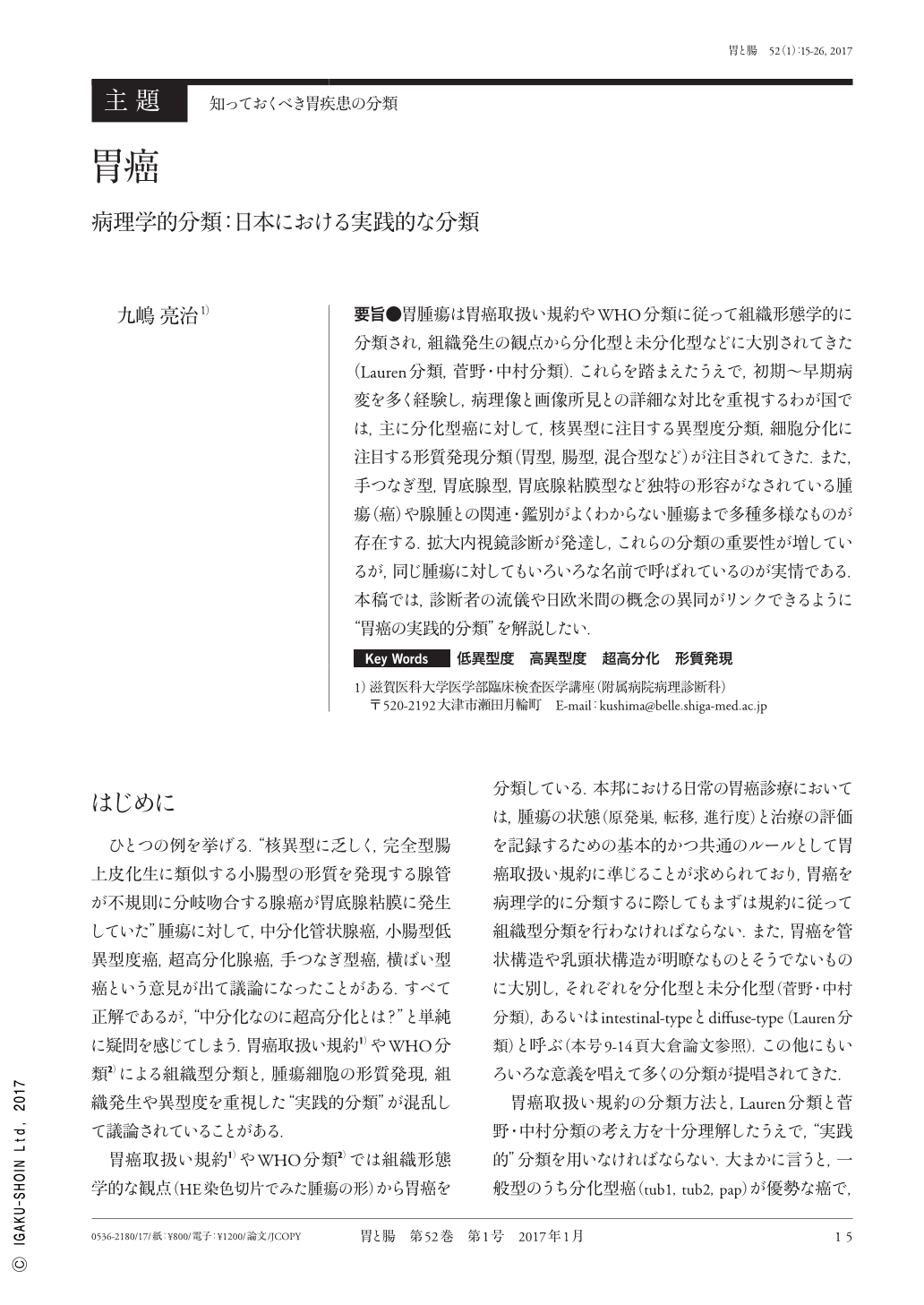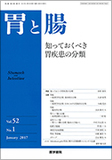Japanese
English
- 有料閲覧
- Abstract 文献概要
- 1ページ目 Look Inside
- 参考文献 Reference
- サイト内被引用 Cited by
要旨●胃腫瘍は胃癌取扱い規約やWHO分類に従って組織形態学的に分類され,組織発生の観点から分化型と未分化型などに大別されてきた(Lauren分類,菅野・中村分類).これらを踏まえたうえで,初期〜早期病変を多く経験し,病理像と画像所見との詳細な対比を重視するわが国では,主に分化型癌に対して,核異型に注目する異型度分類,細胞分化に注目する形質発現分類(胃型,腸型,混合型など)が注目されてきた.また,手つなぎ型,胃底腺型,胃底腺粘膜型など独特の形容がなされている腫瘍(癌)や腺腫との関連・鑑別がよくわからない腫瘍まで多種多様なものが存在する.拡大内視鏡診断が発達し,これらの分類の重要性が増しているが,同じ腫瘍に対してもいろいろな名前で呼ばれているのが実情である.本稿では,診断者の流儀や日欧米間の概念の異同がリンクできるように“胃癌の実践的分類”を解説したい.
Gastric tumors are histologically classified according to the Japanese Classification of Gastric Carcinoma or the WHO Classification of the Digestive System. From the histogenetic point of view, they are subdivided into differentiated and undifferentiated types of carcinomas(Lauren or Sugano/Nakamura Classification). In Japan, additional classifications focusing on the degree of nuclear atypia or phenotypic expressions(gastric, intestinal, and mixed type)of gastric tumors are being considered, particularly for early lesions and for comparing the histopathological and endoscopic findings. There are unique diagnostic terms, such as shaking-hand(crawling)-type, fundic-gland-type, or fundic-gland mucosal-type tumors. Adenoma-associated lesions are also encountered. The importance of these classifications increases particularly due to the advancements in the field of magnifying endoscopy. Practical classifications of gastric carcinomas were reviewed to compare the differences in diagnostic criteria or styles of pathologists in Japan and western countries.

Copyright © 2017, Igaku-Shoin Ltd. All rights reserved.


